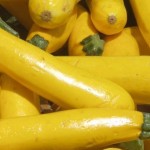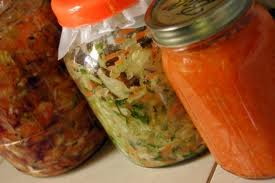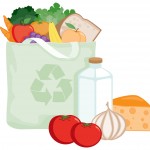 Fueling up the body and mind with breakfast is one of the most important parts of a healthy diet. Some mornings, such as those crazy, run-out-the-door-we’re-late-for-school-and-I’m-late-for-work mornings, having an easy to prepare and transportable idea breakfast is key. Enter the yogurt shake. Throw some fruit, yogurt, possibly even a nut butter, in the blender and breakfast is ready. Possibilities are only limited by what you have in your pantry or fridge. Try to include three food groups in the shake for a more balanced breakfast.
Fueling up the body and mind with breakfast is one of the most important parts of a healthy diet. Some mornings, such as those crazy, run-out-the-door-we’re-late-for-school-and-I’m-late-for-work mornings, having an easy to prepare and transportable idea breakfast is key. Enter the yogurt shake. Throw some fruit, yogurt, possibly even a nut butter, in the blender and breakfast is ready. Possibilities are only limited by what you have in your pantry or fridge. Try to include three food groups in the shake for a more balanced breakfast.
* For easy cleanup, fill the blender with water, add a teeny drop of dish soap and run for a few seconds. Rinse and done.
Yogurt Breakfast Shake
1 8 oz plain nonfat yogurt
1 6 oz low-fat vanilla yogurt
1 ½ cups milk
1 cup strawberries
1 large banana, cut into 2-inch pieces
2 tbsp ground flaxseed
2 tbsp brown sugar
4 ice cubes
In blender, process all ingredients except, ice cubes, until smooth.
Add the ice cubes and blend until the shake if frothy.
Makes 4 servings.





 For many, the word “chia” brings to mind those novelty planters from the 80’s called Chia Pets. Actually though, chia seeds have been a part of the Central American diet since ancient times. The edible seed is suddenly a hot topic these days because of its omega- fatty acid content. Similar to flax seeds, chia seeds are a good source of omega-3 fatty acids; however, a few key differences between the two seeds have rapidly elevated chia seeds to numero uno omega-3 superfood, a place long held by flax seeds. The differences are:
For many, the word “chia” brings to mind those novelty planters from the 80’s called Chia Pets. Actually though, chia seeds have been a part of the Central American diet since ancient times. The edible seed is suddenly a hot topic these days because of its omega- fatty acid content. Similar to flax seeds, chia seeds are a good source of omega-3 fatty acids; however, a few key differences between the two seeds have rapidly elevated chia seeds to numero uno omega-3 superfood, a place long held by flax seeds. The differences are: This quick bite is dedicated to those who celebrate Easter, a holiday that is rapidly approaching. Like so many holidays before it (Halloween, Christmas, Valentine’s Day, etc), Easter has become another holiday accosted by the candy industry. Keeping in mind that moderation is one of the keys to good nutrition, here are a few ideas to displace some of the candy in Easter baskets.
This quick bite is dedicated to those who celebrate Easter, a holiday that is rapidly approaching. Like so many holidays before it (Halloween, Christmas, Valentine’s Day, etc), Easter has become another holiday accosted by the candy industry. Keeping in mind that moderation is one of the keys to good nutrition, here are a few ideas to displace some of the candy in Easter baskets. 
 Coconut water, the clear juice found inside young coconuts, is one of the latest American health crazes. Should everyone be drinking it?
Coconut water, the clear juice found inside young coconuts, is one of the latest American health crazes. Should everyone be drinking it? According to experts at the USDA, the steadily increasing food costs are again expected to rise in 2012. Here are a few ways to reduce your household’s food costs:
According to experts at the USDA, the steadily increasing food costs are again expected to rise in 2012. Here are a few ways to reduce your household’s food costs: